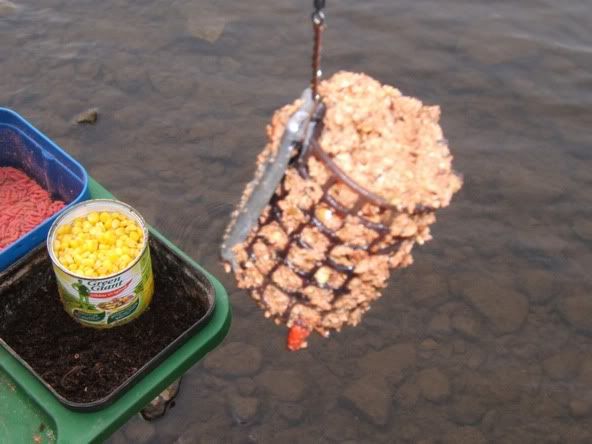
Feeder fishing involves having a capsule of bait attached to your line, which then sinks to the bottom so you are ledgering. On the right the feeder is filled with ground bait. Fishing on the bottom makes good bite indication difficult since there is no float.
One method is to 'feel' the line. I suggest holding the line between your thumb and other four fingers. For this to work the line must be taut. When a fish does take your bait you should feel a tug on the line. This is by the far the most sensitive bite indication.
Another method is to 'quiver tip'. This involves the use of a 'quiver tip' rod or a rod that is quite flexible. Again the line should be taut. When the fish does pull your line the rod tip should move back and forth and hence the name 'quiver tip'.

